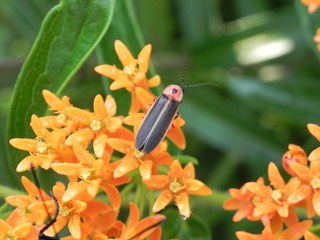The Rainy Day Naturalist: Cicadas, The 2021 Edition
- William L Culbertson
- Mar 17, 2021
- 2 min read
Updated: Apr 9, 2022
Calm and serene
The sound of a cicada
Penetrates the rock.
Matsuo Basho
They’re coming! Be aware! They’ll rise up out of the ground by the billions with bulging red eyes and stocky bodies. Their lurid, high-pitched whine will echo throughout the Great Lakes and beyond.
No, this is not a promotional blurb for a bad monster movie. Rather, it is a preview of a regular—but rare—natural event. Sometime in the middle of May, 2021, the seventeen-year cicadas of Brood X will appear in our area for the first time in, uh, seventeen years. Although sometimes called seventeen-year “locusts,” they are not locusts. Locusts are grasshoppers. Other broods in other regions appear on the same cycle but in different years.
Periodic cicadas (our species is Magicicada septendim) are insects that spend most of their seventeen-year lives underground as nymphs sucking tree sap for nourishment. In the spring of their seventeenth year, the nymphs crawl out of the ground and up the tree trunk. There they shed their skins to become the bugs we see. And these truly are a type of insect properly called “bug.”
Cicadas are relatively large insects, an inch or so long. Big, red-domed eyes protrude from either side of their heads. They carry their long, transparent wings folded over their back. While they can fly, they are not nimble. Cicadas do not sting, nor do they bite people—intentionally, anyway. They suck sap through mouth parts designed to cut into a tree branch. So—fair warning—they have been known to mistake human fingers for a twig.
In their four-to-six-week aboveground adult lives, cicadas mate, the females lay eggs, and they die. The males congregate during this single swinging-singles season to “sing” by vibrating ridged membranes on either side of their thorax. Individually they are loud, maybe 100 decibels. With a million males per acre all hoping to get lucky, their raspy drone permeates the outdoors. Fortunately for sleepers, cicadas shut up at night.
Female cicadas lay eggs, twenty at a time, into slits in tender tree branches. Six to ten weeks later, the eggs hatch into young nymphs that fall to the ground and disappear for another seventeen years. While underground, nymphs grow and molt five times before they have their very limited days in the sun.
Seventeen years is a long time for an insect to live. Why such strange reproductive behavior, and why seventeen years? Normally there is a balance between predator and prey—the eater and the eaten. Big, fat cicadas are an easy meal for birds, squirrels, cats, and many other types of reptiles and mammals. When cicadas show up in such huge numbers, predators can eat their fill with plenty of cicadas left over. Hunger satisfied, those animals sit burping and digesting while the rest of the cicadas do their thing. By limiting their appearance to long, prime number periods of years, cicadas insure they are an undependable food source for anyone else.
Do you know the legend about cicadas? They say they are the souls of poets who cannot keep quiet because, when they were alive, they never wrote the poems they wanted to.
John Berger



Thanks Bill, this was fascinating. I vividly remember the last time they were around in 2004. I was at the Indiana State High School Track Meet and they were so loud you could barely hear the cheering crowd.